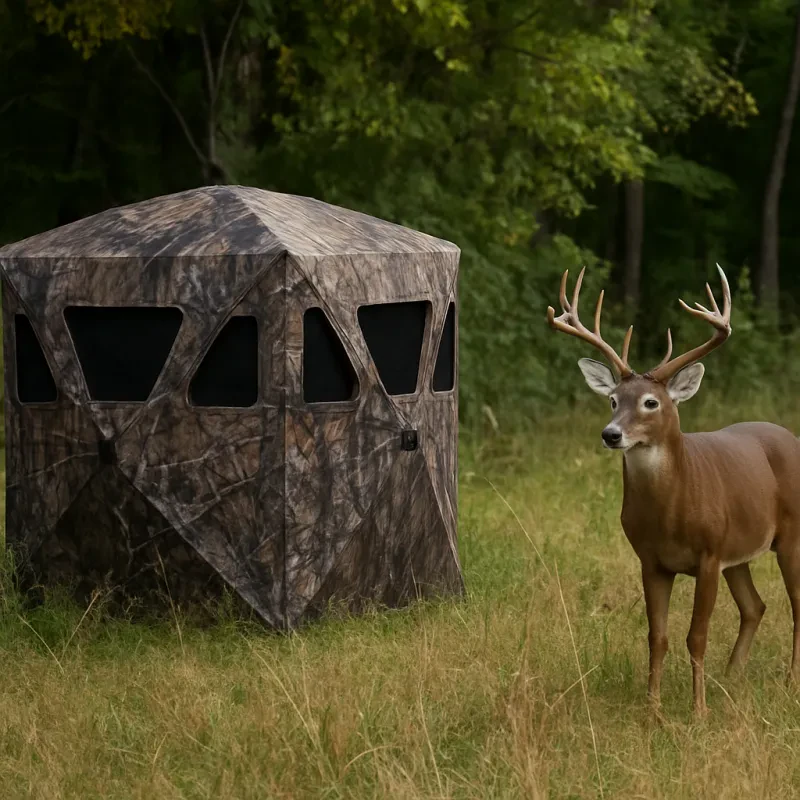Keeping your hunting blind clean is crucial for ensuring its longevity and effectiveness. A clean hunting blind not only enhances your experience but also plays a vital role in attracting game. When your blind is tidy and well-maintained, it minimizes odors and disturbances that can scare away wildlife. Debris and leftover food can create an inviting environment for pests, which can be a nuisance and detrimental to your hunting success.
Regular cleaning helps maintain the structural integrity of your hunting blind. Dirt, moisture, and grime can wear down materials over time, leading to potential leaks and damage. By learning How to Maintain and Clean Your Hunting Blind, you can prevent the build-up of mold or mildew that might compromise the blind’s durability. This maintenance not only protects your investment but also ensures that you have a reliable shelter during your hunts.
Additionally, a clean hunting blind allows for better visibility and comfort. Removing clutter from inside the blind creates more space for you to move and properly set up your gear. It also enhances your ability to spot game without obstruction. A clean, organized environment makes your hunting experience more enjoyable, allowing you to focus on what truly matters—hunting. Therefore, taking the time to keep your hunting blind clean is essential for both the equipment’s longevity and your overall success in the field.
Basic Cleaning Tools You Need
First on the list is a stiff-bristle broom. This tool is perfect for sweeping away dirt, leaves, and debris that tends to accumulate inside your blind. A good broom can reach those tough corners, making it an essential part of your cleaning arsenal. Pair it with a dustpan for collecting all that loose debris easily.
Next, consider a microfiber cloth. Microfiber is excellent for trapping dust and can effectively clean surfaces without scratching them. Whether you're wiping down the walls, windows, or any other area of your blind, a microfiber cloth will help you achieve a spotless finish. It’s lightweight and easy to store, making it a convenient tool to have at your disposal.
Lastly, don’t forget about a quality multi-surface cleaner. When you really need to deep clean, this will help remove tough stains and odors. Just make sure to choose a cleaner that is safe for the materials used in your hunting blind. Knowing How to Maintain and Clean Your Hunting Blind involves using the right products that won't damage your gear.
Step-by-Step Cleaning Guide
Step 1: Gather Your Supplies
Before you start cleaning, gather all necessary supplies. You'll need a soft brush or broom, a bucket of warm water, mild soap, a sponge, and a clean cloth. Make sure you have everything on hand to streamline the process and avoid interruptions.
Step 2: Remove Debris
Begin by removing any debris from your hunting blind. Use the soft brush or broom to sweep away leaves, dirt, and other loose particles. Pay special attention to corners and crevices where dirt can accumulate. A clean surface will make the next steps easier and more effective.
Step 3: Clean the Walls and Windows
Next, it's time to clean the walls and windows of your blind. Mix a small amount of mild soap with warm water in your bucket. Dip the sponge in the soapy water and wipe down the surfaces, including any windows. Rinse the sponge frequently to avoid spreading dirt around. Afterward, use a clean cloth to dry the surfaces and prevent water spots.
Step 4: Check for Repairs
As you clean, take a moment to inspect your hunting blind for any damages. Look for holes, loose fabric, or broken components that may need repairing. Fast action on small issues can prevent them from becoming major problems, helping you maintain and clean your hunting blind effectively.
Tips for Ongoing Maintenance
To ensure your hunting blind lasts for many seasons, regular maintenance is key. Start by checking for any damage after each use. Look for cracks, warped materials, or loose parts that could compromise the structure. Addressing small issues early can prevent them from turning into bigger problems later. A little time spent inspecting your blind can save you from expensive repairs down the road.
Cleaning your hunting blind should be part of your routine. Make it a habit to remove any debris, leaves, or dirt after each hunting trip. A damp cloth can help wipe down surfaces, while a vacuum or brush can take care of hard-to-reach spots. Remember, how to maintain and clean your hunting blind effectively will ensure it remains in good condition, ready for use whenever you need it.
Additionally, consider treating your hunting blind with protective sprays or sealants designed for the materials used. This can help guard against the elements, such as UV rays, rain, and snow. Regularly reapplying these treatments keeps your blind looking fresh and extends its life. Always read the manufacturer’s guidelines to choose the right products that won't damage your blind.
Finally, store your hunting blind properly during the off-season. If possible, keep it indoors to protect it from harsh weather conditions. If outdoor storage is your only option, use a protective cover to shield it from rain, snow, and sunlight. Proper storage is an often-overlooked aspect of maintenance, but it plays a crucial role in the longevity of your hunting blind.


